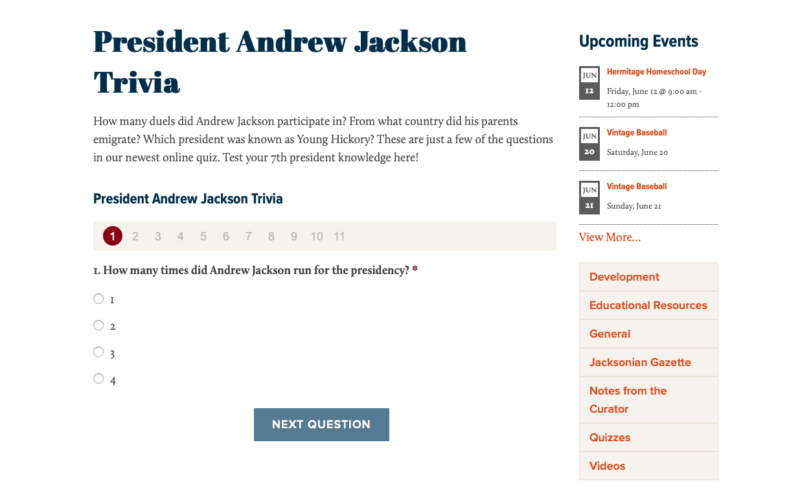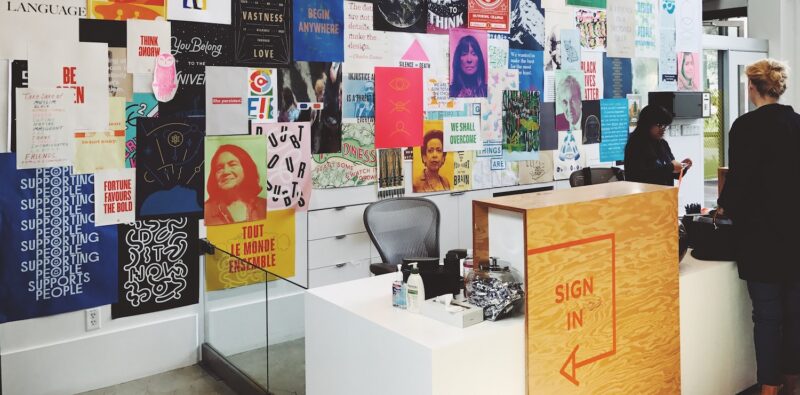If you’re a museum or historical site, you’re built for exploration. Having visitors on site — walking through galleries and exhibits, participating in tours and classes, wandering the grounds — is in your DNA. Shutting your doors due to the COVID-19 pandemic is hard to fathom when so much of what you do centers around in-person guests.
The good news is, with the technology and communication tools at our disposal today, you don’t have to sacrifice your connection with your audience while we’re all socially distancing. We’ve put together 10 ideas for keeping your audience engaged while your museum is closed. Use them for inspiration and make them fit with your museum’s unique personality.
Virtual Engagement Strategies for Museums
1. Make the latest information easy to find.
People are going to be looking for the latest information on your opening dates, hours and event cancelations. Before you do anything else, make sure your website is a trustworthy source of information. Consider adding a site-wide alert to the top of your website, so your users can see the latest when they visit any page. If you need to share more information, create a landing page that offers relevant details. You might also want to mark your individual events as canceled/postponed…or think about how you can make them virtual!

We helped The Hermitage create a site-wide alert banner that you can’t miss.
2. Collect new email subscribers and offer an incentive to join.
While people are coming to your website for news, it’s a great time to invite them to join your email list so they can be the first to know any updates. Consider a pop-up message (like ones from OptinMonster), which can boost conversions. You might also want to offer an incentive to join, like a discount in your online store or on pre-purchased tickets, to help off-set the impacts of closing.
3. Source social media content from your followers.
Invite your followers to share stories about their favorite exhibits, artwork or artifacts, and repost to your channels. Some prompt ideas:
- Ask your fans to recap a favorite memory from a field trip as a child.
- Invite parents to film their kids identifying and describing an artifact you share.
- Share a photo of something from your collection, and poll the audience about it.
4. Hold a contest.
Contests are a great way to get people excited and interacting. The key is to think of a topic that fits with your subject matter, and offer a small prize, like a gift card or merch. (Be sure to follow the rules for social media contests.) Some ideas:
- Create your own version of a famous painting.
- Answer trivia questions about a historical figure or event.
- Dress up like a famous character.
5. Teach an interactive class or virtual lesson.
Film your instructors or experts demonstrating something, and invite viewers to give it a try from their homes. Or ask your educational team to teach a lesson on an interesting topic. It’s a great way to offer learning opportunities for teachers and students while schools are also closed.
6. Share a behind-the-scenes tour.
Virtually take your audience to spots in your museum that not everyone gets to see. Ask your docents or curators to share a story or background information.
7. Host a virtual viewing party.
If you have a movie you share with on-site visitors, can you make it temporarily available for online viewing? Maybe there’s a movie out there related to your subject matter. Can you plan a group watch party, where you live tweet commentary or chat about reactions?
8. Hold a live Q&A or trivia session.
Make your curators available for a Q&A session on Facebook Live. Viewers can submit questions live, or you can invite teachers and students to submit questions ahead of time. Or…reverse it! You ask the questions, and see who can answer correctly first!
9. Create an online quiz.
If “going live” isn’t an option for you, consider setting up an online quiz where people can answer questions at their own pace, and test their knowledge on your subject matter.

10. Keep sending emails.
Don’t forget about your email subscribers while you’re working remote. Not everyone is on social media, so email is still a great way to engage with your loyal subscribers. With a few tweaks, you can most likely repurpose the same content so it works for email as well.
Closing your physical space doesn’t have to mean you’re closed for business. People still want to explore and learn and engage. This is your opportunity to connect with your audience in a new way and deepen your connections in your own community and around the world.



